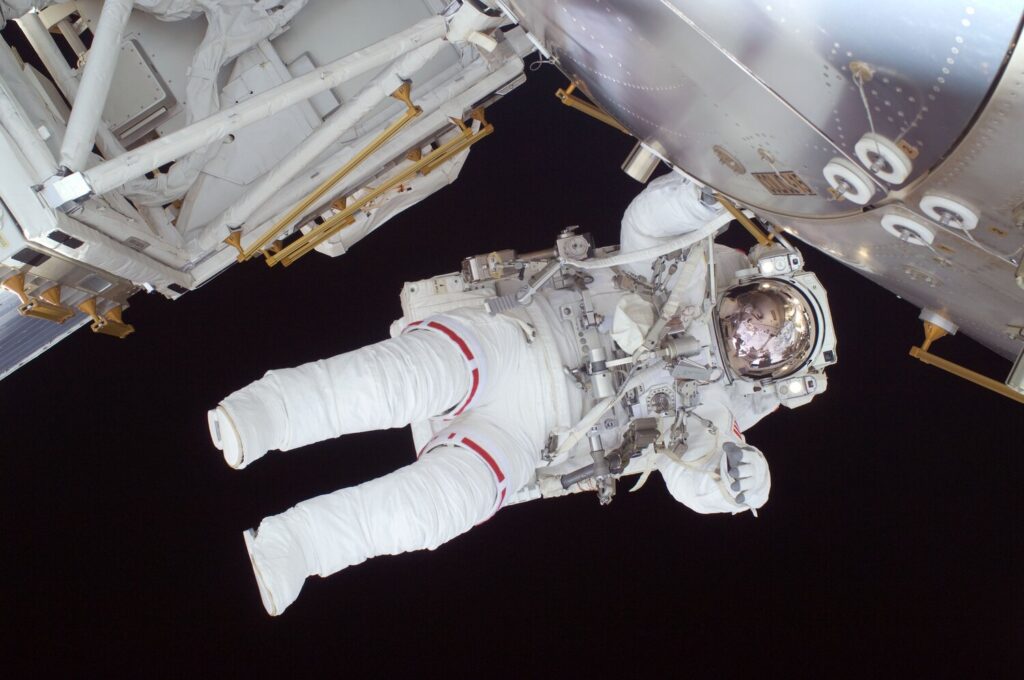Blog contributed by Matt Beezley.
A green screen and some fancy suspension cables were never enough for Tom Cruise. Executing a HALO jump from 25,000 feet wasn’t enough for Tom Cruise. Scaling the Burj Khalifa at a much more casual 1,700 feet certainly wasn’t enough for Tom Cruise.
Now the biggest action star in the history of film has a new plan: Talk NASA and SpaceX into launching him to the International Space Station from a Crew Dragon capsule and Falcon 9 rocket to film the first action-adventure picture in space.
Talks are preliminary and there’s no studio attached to the project yet, but even the idea of a live action zero-gravity movie is enough to get me seriously interested (I mean obviously, I don’t just write about anything these days).
This news grabbed my attention for more than just novelty. There are two themes here I want to talk through.
First, this is perhaps the coolest marketing campaign ever made. NASA has a major competitive advantage in this department given their market category is space exploration. I realize that—as someone who closely identifies with whatever persona NASA has that reads something like “dedicated couch astrophysicist”—space exploration isn’t nearly as popular among the public as it was in the 60s during the Space Race.
NASA’s and the broader space community’s response to declining interest has always been to hit people with progressively cooler gadgets and discoveries:
– SpaceX landing three Falcon 9 rocket boosters simultaneously for the first time;
– The first photo of a black hole’s silhouette;
– The revelation that liquid water still flows on Mars;
– And, perhaps the coolest of them all, the impending launch of the James Webb Space Telescope that is a hundred times more powerful than Hubble and will give astronomers a glimpse into the formation of the early universe.
Forgive my nerdy rant, there, I can’t help myself sometimes. The point is, the space community has largely relied on scientific discoveries and new technologies to promote space exploration. It makes complete sense for people like myself who spend hours watching space documentaries and staying up-to-date on space news. Now, NASA is betting that something more consumer-friendly like, say, Tom Cruise being launched into actual space to shoot a film, is a new way to inspire the next generation of physicists, astronomers and mathematicians.
It’s a brand awareness play through and through, and a very good one if you ask me. I am writing about it after all.
There’s also an interesting sustainability element to this that I discovered by sifting through the Facebook comments on the NPR story. One thread in particular deeply offended my sensibilities. To paraphrase, it basically revitalized the decades-old argument that formed when it became clear the U.S. had won the space race and would “defeat” the Soviet Union: namely, that space travel was too expensive and that we should focus our attention and resources on Earth.
I have major problems with this argument that I won’t outline in full detail here, except to say that dedicating more money to earthly problems like world hunger and pervasive, extreme poverty is no solution at all. We already have enough food to feed the world over. To pull from a statistic that our friend, Jacob Shapiro, cited in a recent article on global food supply, the world average per capita of food availability was 2,770 calories per day in 2012, according to a report from the Food and Agriculture Organization of the United Nations. The same holds true for tackling poverty around the world. The problems that manifest as extreme inequality have much more to do with corruption, state instability and malignant social and economic systems than they do with lack of capital.
Moving to sustainability: I think it’s quite fair to speculate that the next several decades of space exploration could be one of the most influential factors in whether the human race can repair the near-fatal damage we’ve inflicted on Earth over the last two and a half centuries.
From that perspective, the best way to “focus on the problems here” is to turn our eyes skyward, for the vastness that lies beyond our intensely fragile atmosphere holds so much more opportunity: a “natural” resource like Helium-3, which exists in abundance on the moon, is a prime candidate for nuclear fusion reactors.
The commercialization of space, meanwhile, will provide ample opportunities to move industrial processes into orbit. Jeff Bezos, founder and CEO of Amazon, envisions a future scenario in which all manufacturing and production operations are moved into orbit to preserve Earth’s remaining resources and beauty.
These are long-term ideas, but they have to be ideated and developed today so we can be prepared to execute on them in the future. What better way to stimulate interest in those ideas than putting Tom Cruise into space?






